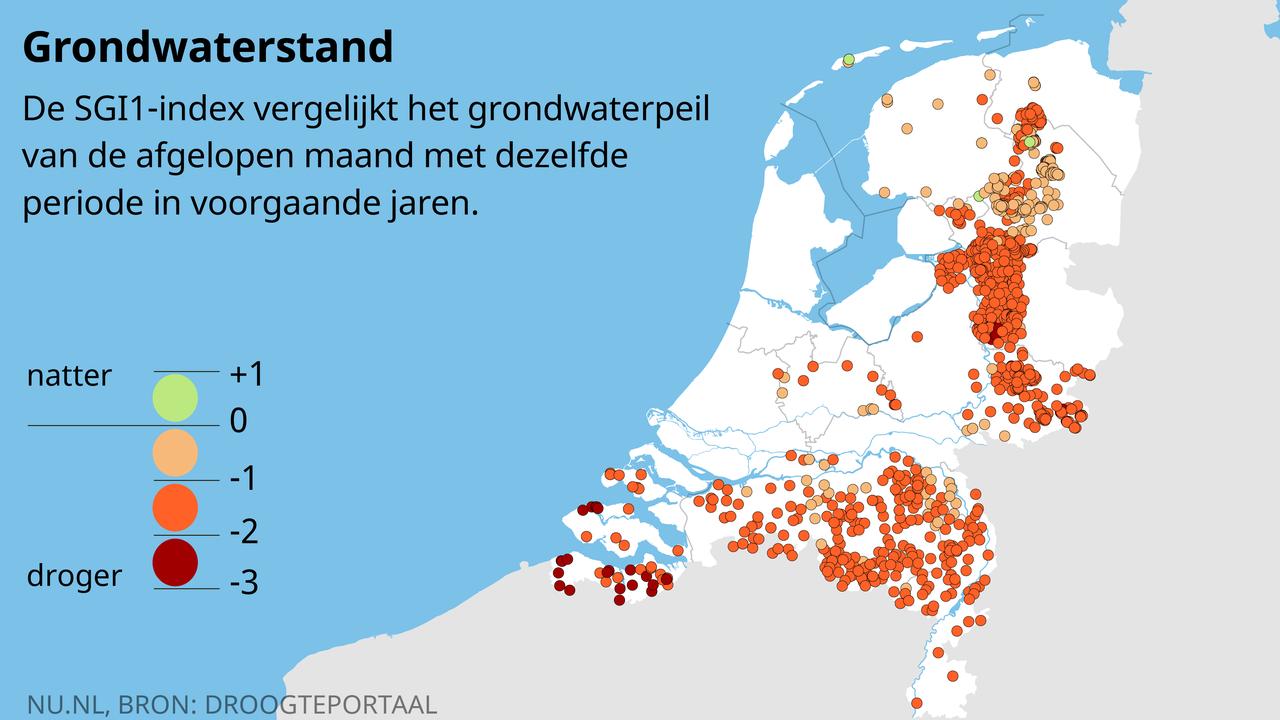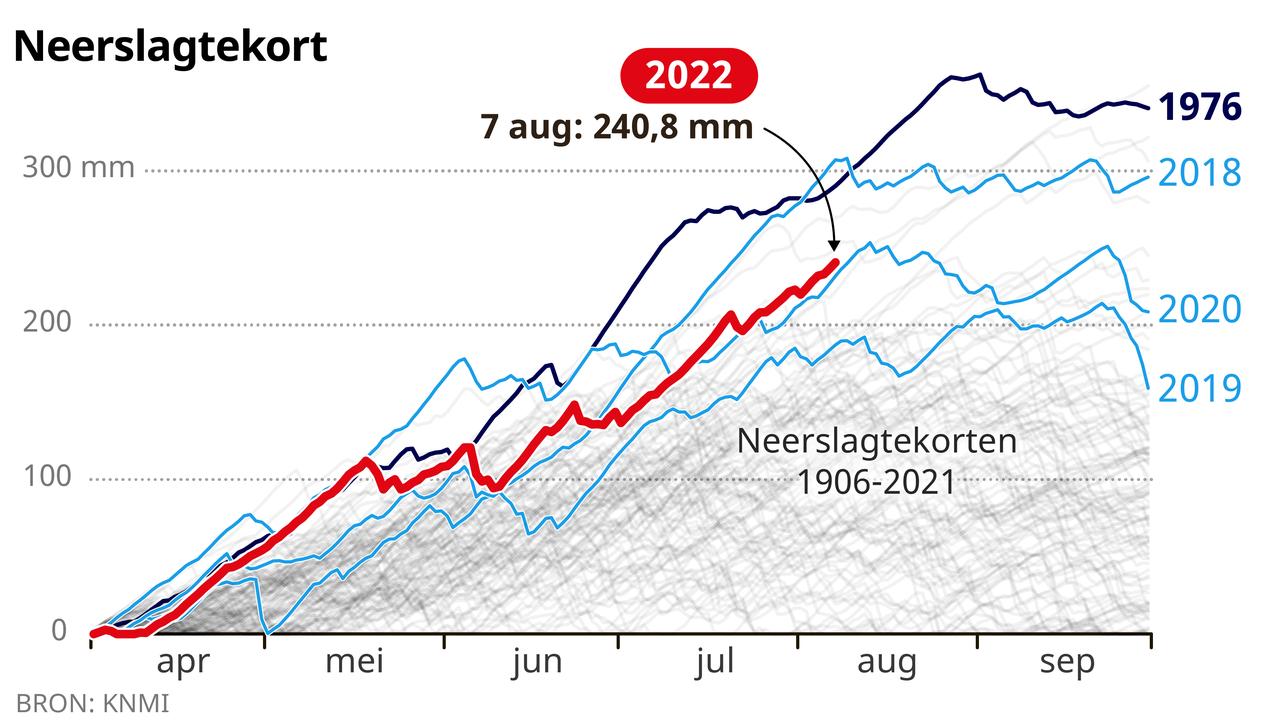Four years after the extreme drought of 2018, the Netherlands is completely dry again. We seem to have learned a lesson: the solution to increasingly dry summers lies in the winter months. Then there will be enough rain. If we drain less quickly, there will also be more water in the soil in summer. But we come up against limits, according to a tour of eight water boards.
Water boards are reaching the maximum they can and are allowed to do, says Niko Wanders, a drought expert from Utrecht University. To raise that cap, we as a country have to make a different trade-off between drought damage and winter flood risk: “We will sometimes have to accept some wet feet locally.”
This actually requires new spatial planning in the Netherlands, says Wanders. “The biggest problem is our fragmented landscape (nature, housing and agriculture close together, editor’s note). This makes it very difficult to meet – often contradictory – water needs everywhere.”
NU.nl toured drought-sensitive water boards. They are mainly located on sandy soils in the east and south of the country. Within the limits of current possibilities, the limits of water retention in winter seem to have been reached. “Balance between floods and water scarcity”, Clarion Wegerif from Hoogheemraadschap De Stichtse Rijnlanden describes the current room for manoeuvre.

Winding streams with overflowing banks
To revitalize the water tables somewhat, the water offices take many small measures. For example, after the extreme drought of 2018, the Limburg Water Board installed 2200 “agricultural dams” and 55 sandbag dams. They must prevent rainwater from flowing directly from ditches and streams. As a result, the water table is now on average 20 to 25 centimeters higher in winter.
The water board of Hunze en Aa restores the streams of Drenthe and eastern Groningen to their natural winding course and creates banks that can be flooded. That has made room in recent years to collect an additional 55 million cubic meters of water, spokeswoman Cora Kuiper said. “But it is above all to be able to absorb heavy showers and thus avoid flooding elsewhere.”
“This water has more time to absorb into the ground. So groundwater can stay at the same height for a longer period in the spring, but during a longer dry period it subsides quickly and does little of difference.”
Need more space to collect water in winter
Since the drought of 2018, the water board of Maas en Aa in North Brabant has set up dams in streams and other waterways as high as possible throughout the year.
But here too the question is whether the measures have enough bite. The purpose of retaining water in the rivers is to replenish the water tables, but in the event of extreme drought, the Maas en Aa water office must do the opposite: groundwater is then pumped to the watercourses to prevent them from drying up and fish, for example, from dying. “Brabant’s groundwater remains vulnerable,” says spokeswoman Sophie Hendriks.
The Netherlands has experienced four exceptionally dry summers in five years.

The Netherlands has experienced four exceptionally dry summers in five years.
Retaining additional rainwater requires cooperation with landowners, says Marja Reijnders of the Vallei en Veluwe water board. These landowners manage the “capillaries of the water system”, such as ditches and ditches.
“Water needs space. And the water board does not concern this space.
Marja Reijnders, Vallei en Veluwe water board
And in this collaboration it is therefore a question of seeking balance. Because as drought expert Wanders said: by retaining as much water as possible in winter, the land can also be flooded. In fact, for groundwater reclamation, this should happen once in a while.
Finding this new balance creates a dilemma: if we want to retain more water in winter, we also have to store it somewhere, says Reijnders. “Water needs space. And the Water Board is not about that space.”

“Food expert. Unapologetic bacon maven. Beer enthusiast. Pop cultureaholic. General travel scholar. Total internet buff.”
 DodoFinance Breaking News Made For You!
DodoFinance Breaking News Made For You!
